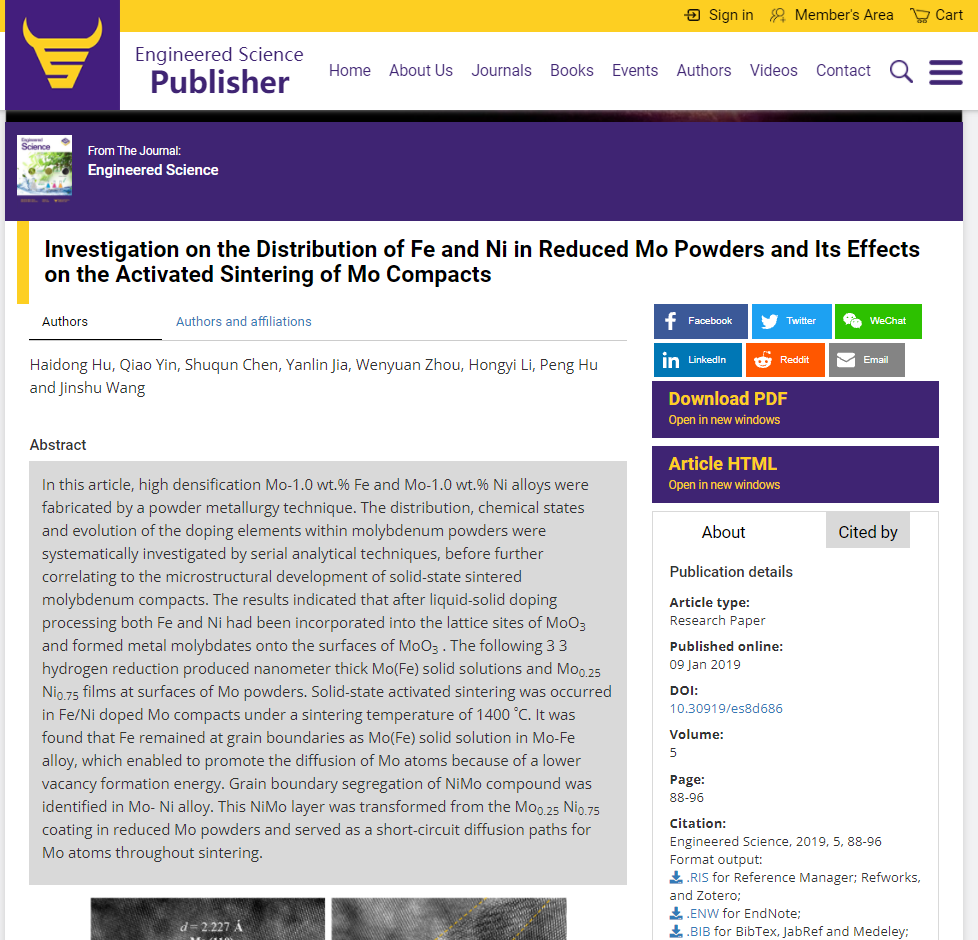High-density Mo-1.0 wt.% Fe and Mo-1.0 wt.% Ni alloy technology is produced through powder metallurgy. The distribution, chemical state and evolution of doping elements in molybdenum powder are systematically studied through a series of analysis techniques before being further related to the development of microstructures. The results show that after liquid-solid doping treatment, both Fe and Ni have lattice sites that are bonded to MoO and form metal molybdates on the surface of MoO. Solid-0.25 0.75 At a sintering temperature of 1400 ºC, the Fe/Ni-doped Mo compact undergoes state activation sintering. It has been found that Fe remains in the grain boundary in the form of Mo(Fe) as a solid solution in the Mo-Fe alloy, which can promote the diffusion of Mo because of the low vacancy formation energy. The grain boundary segregation of NiMo compound is found in Mo Ni alloy. The NiMo layer is transformed from the Mo Ni coating in the reduced Mo powder and serves as a short-circuit 0.25 0.75 Mo atom diffusion path throughout the sintering process.
